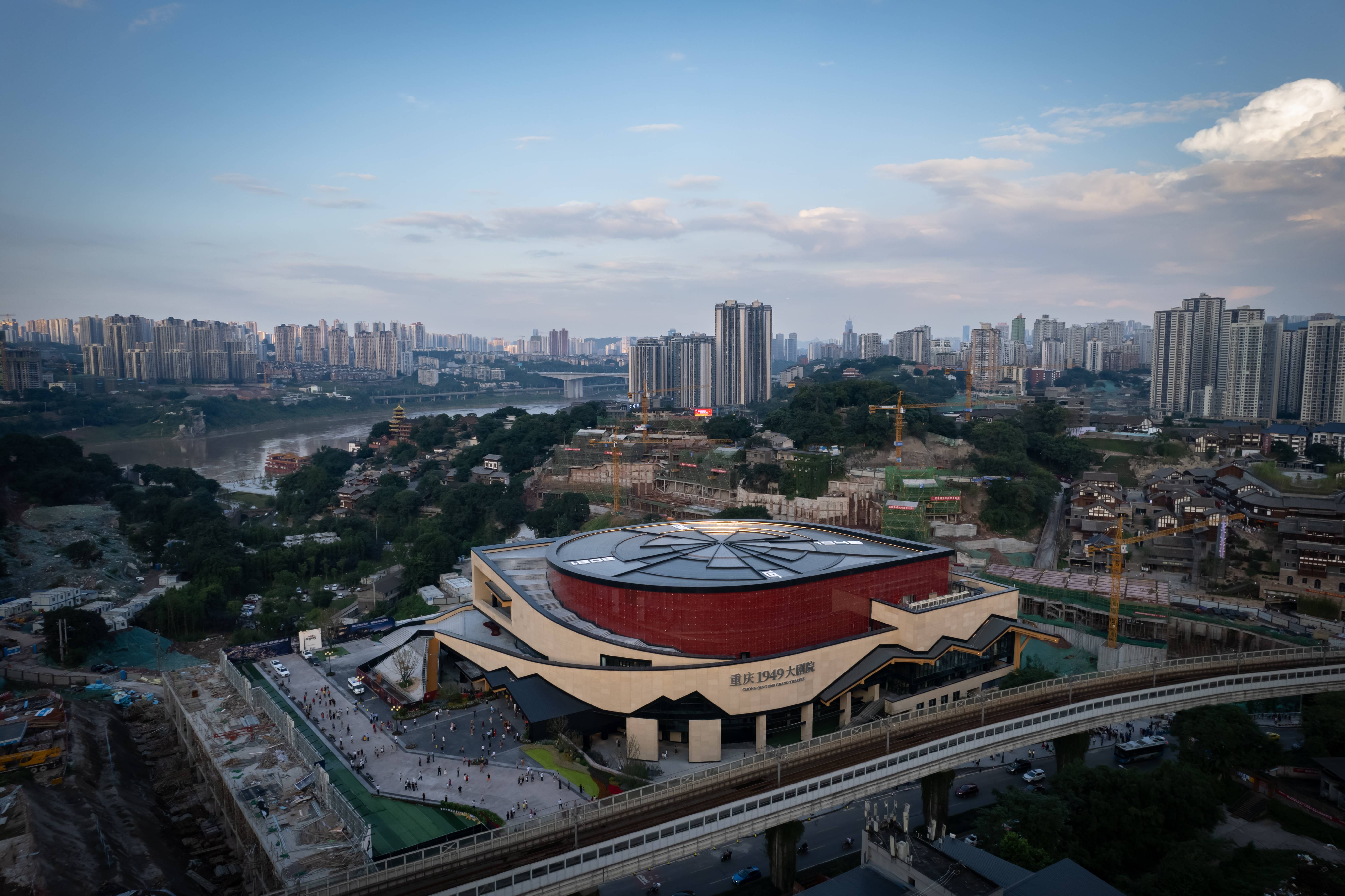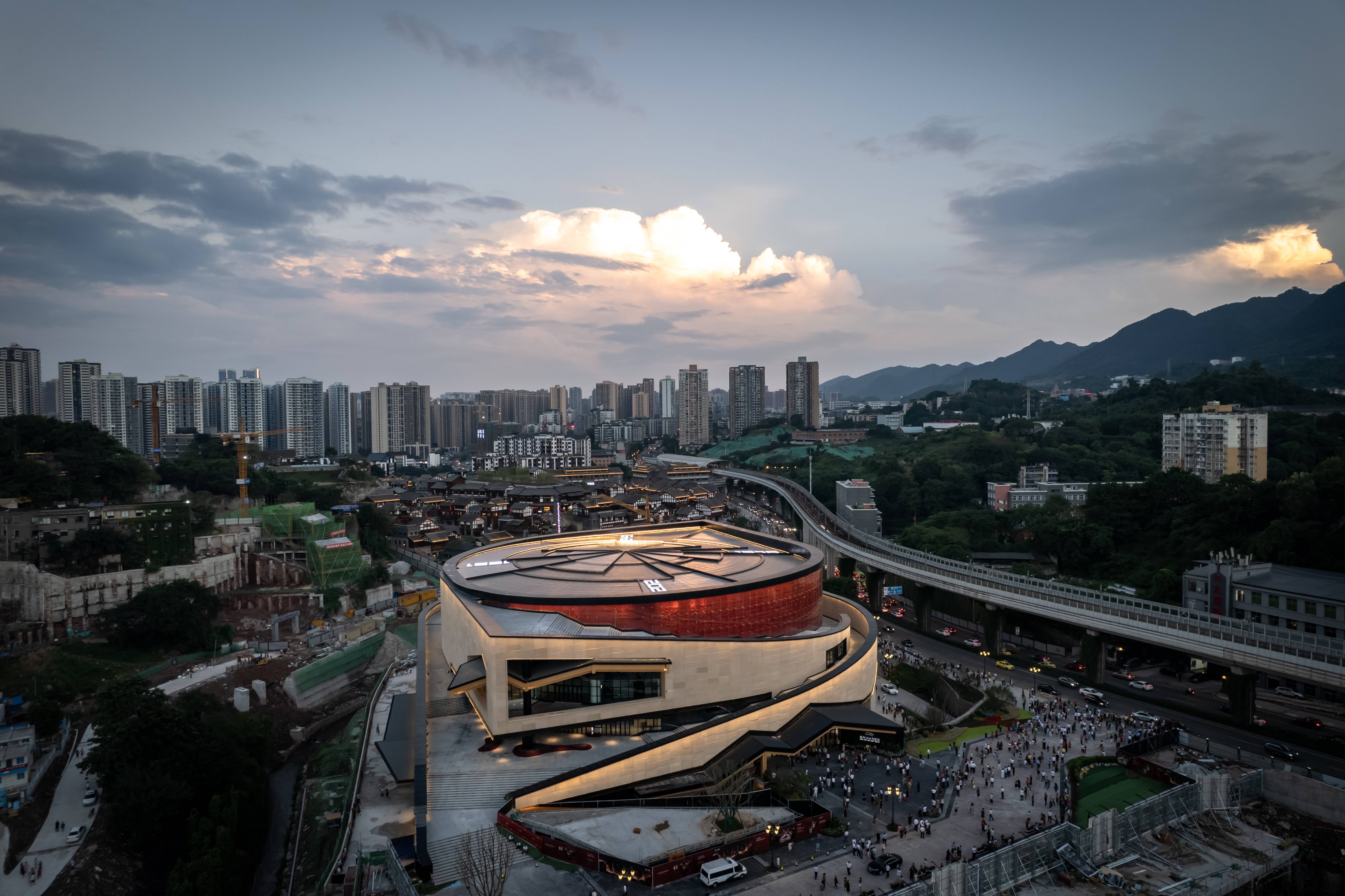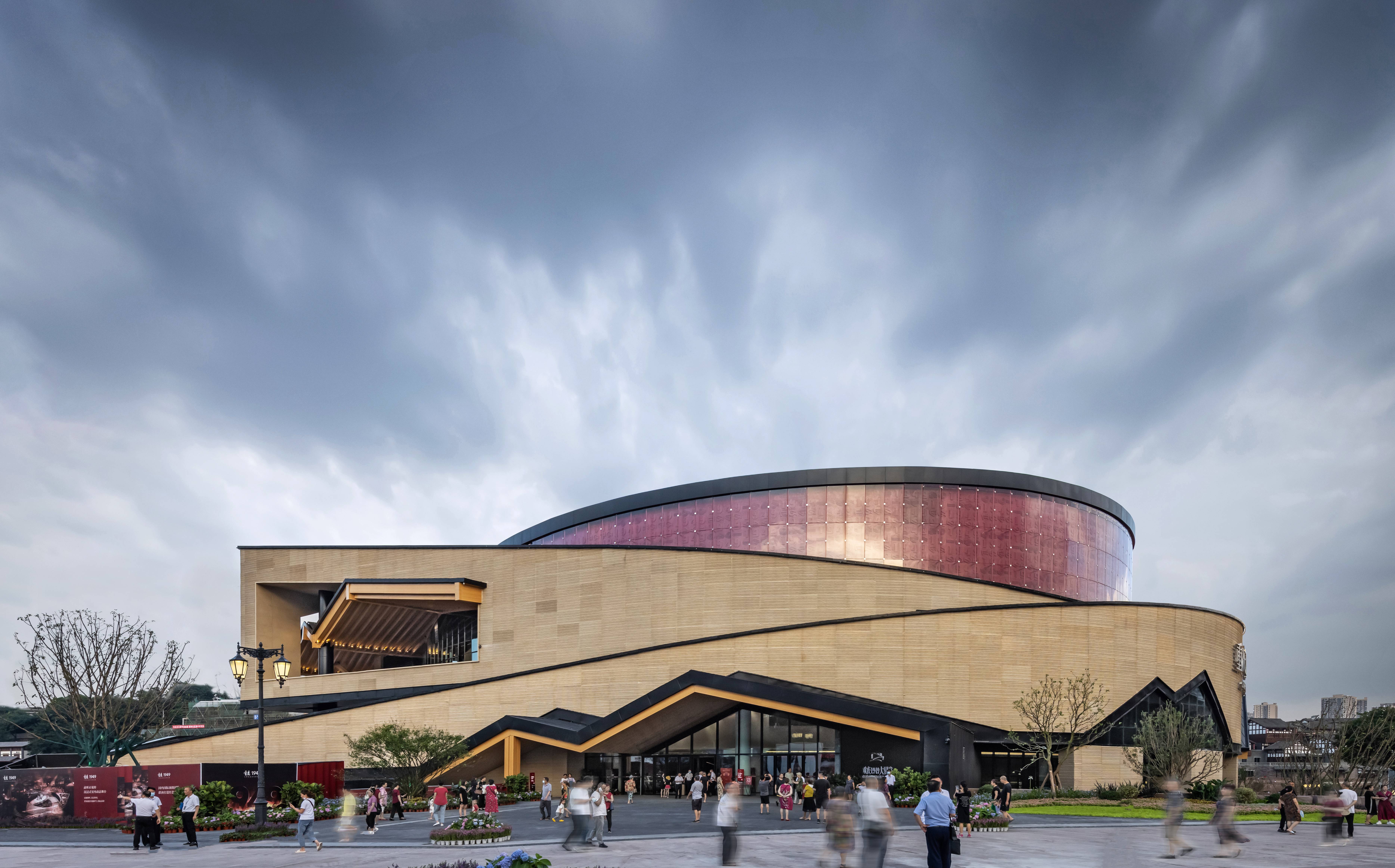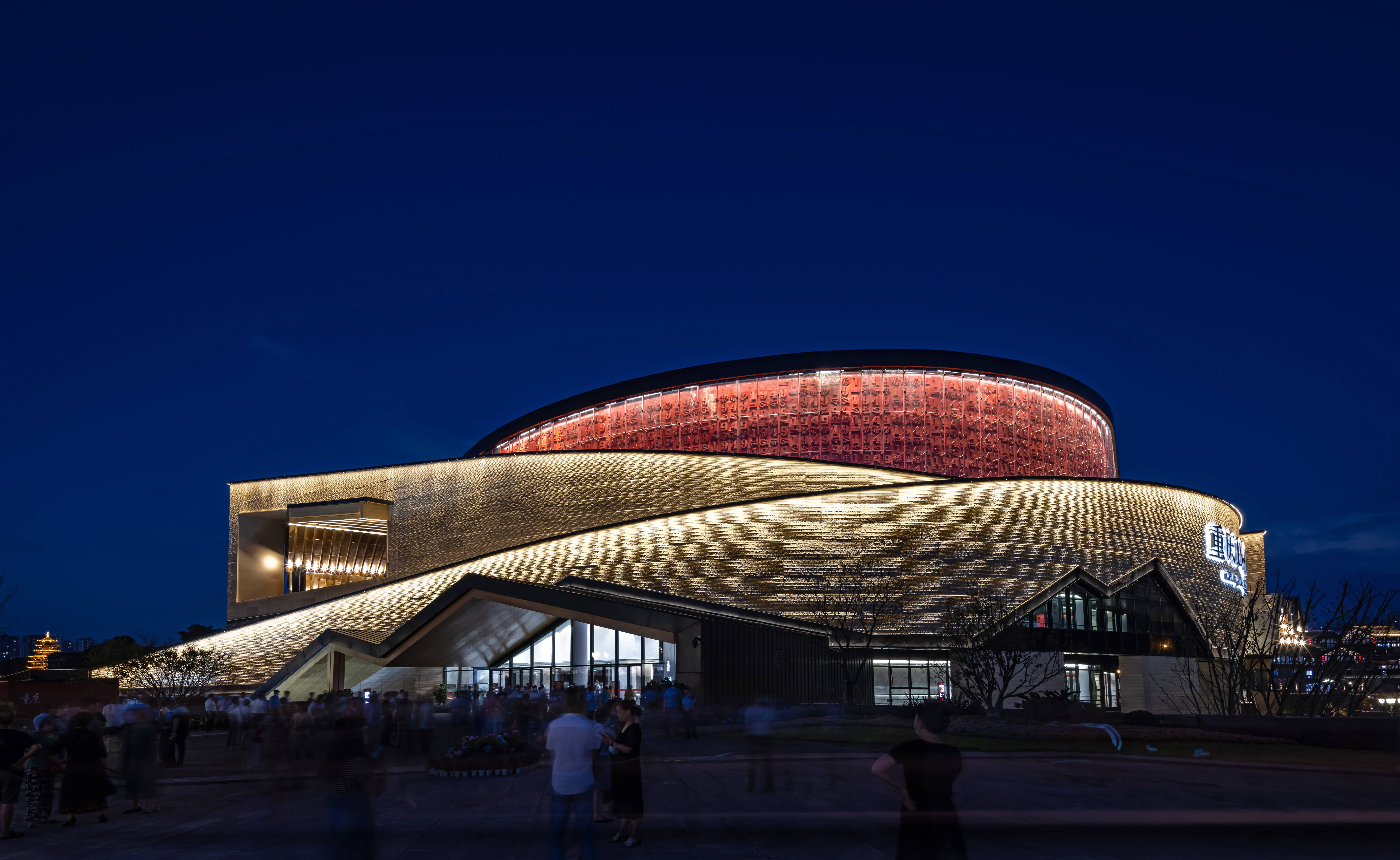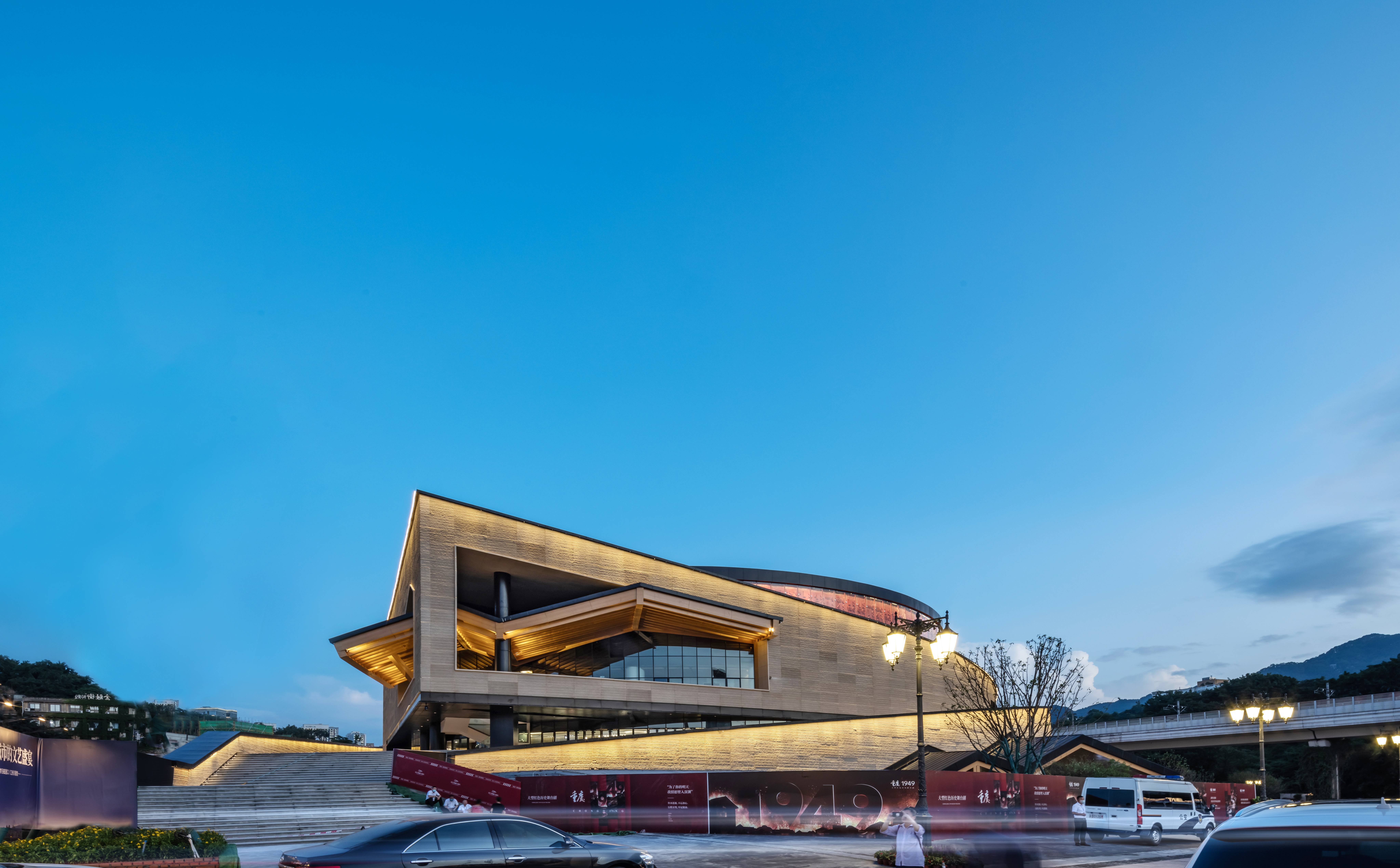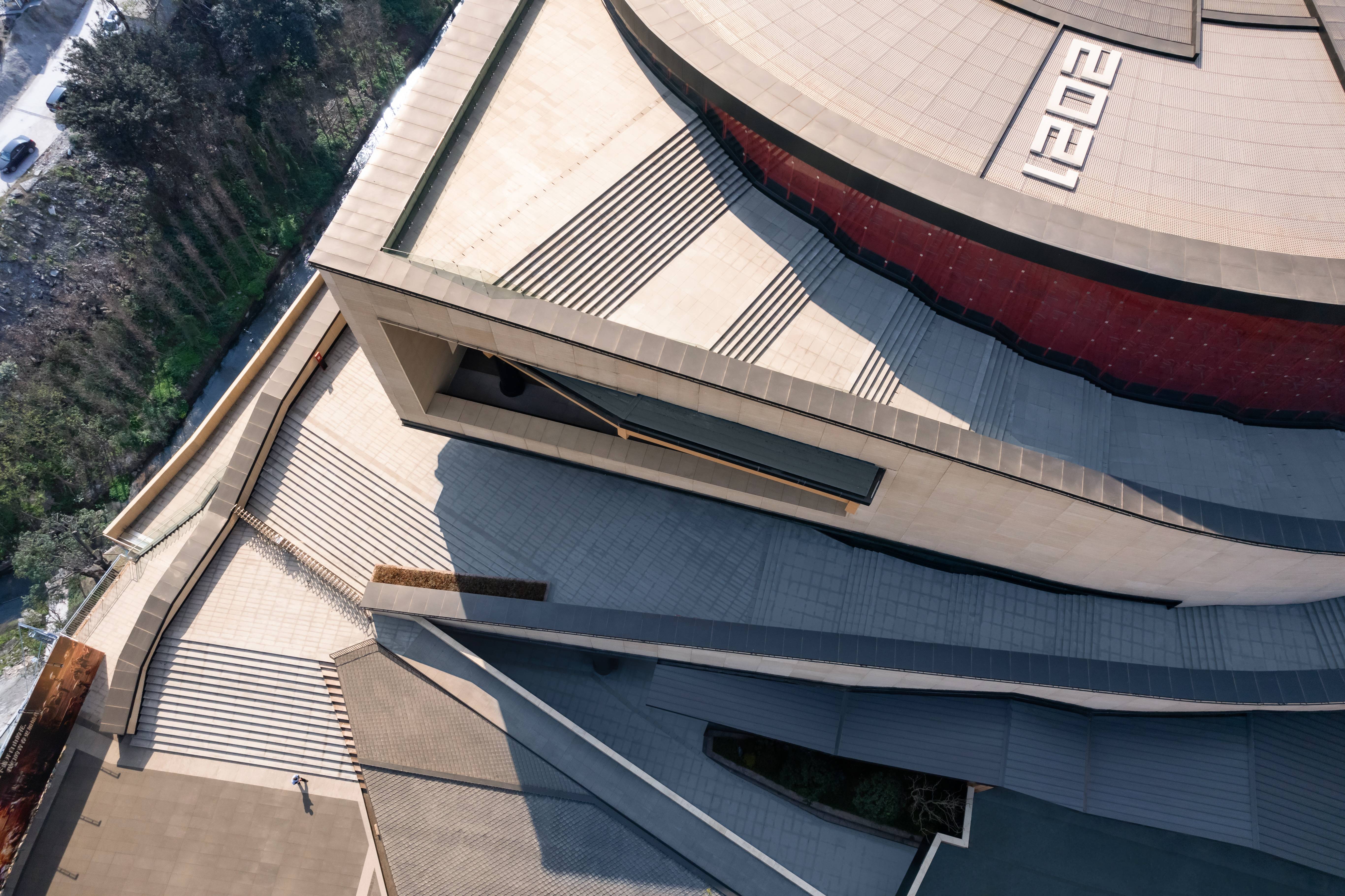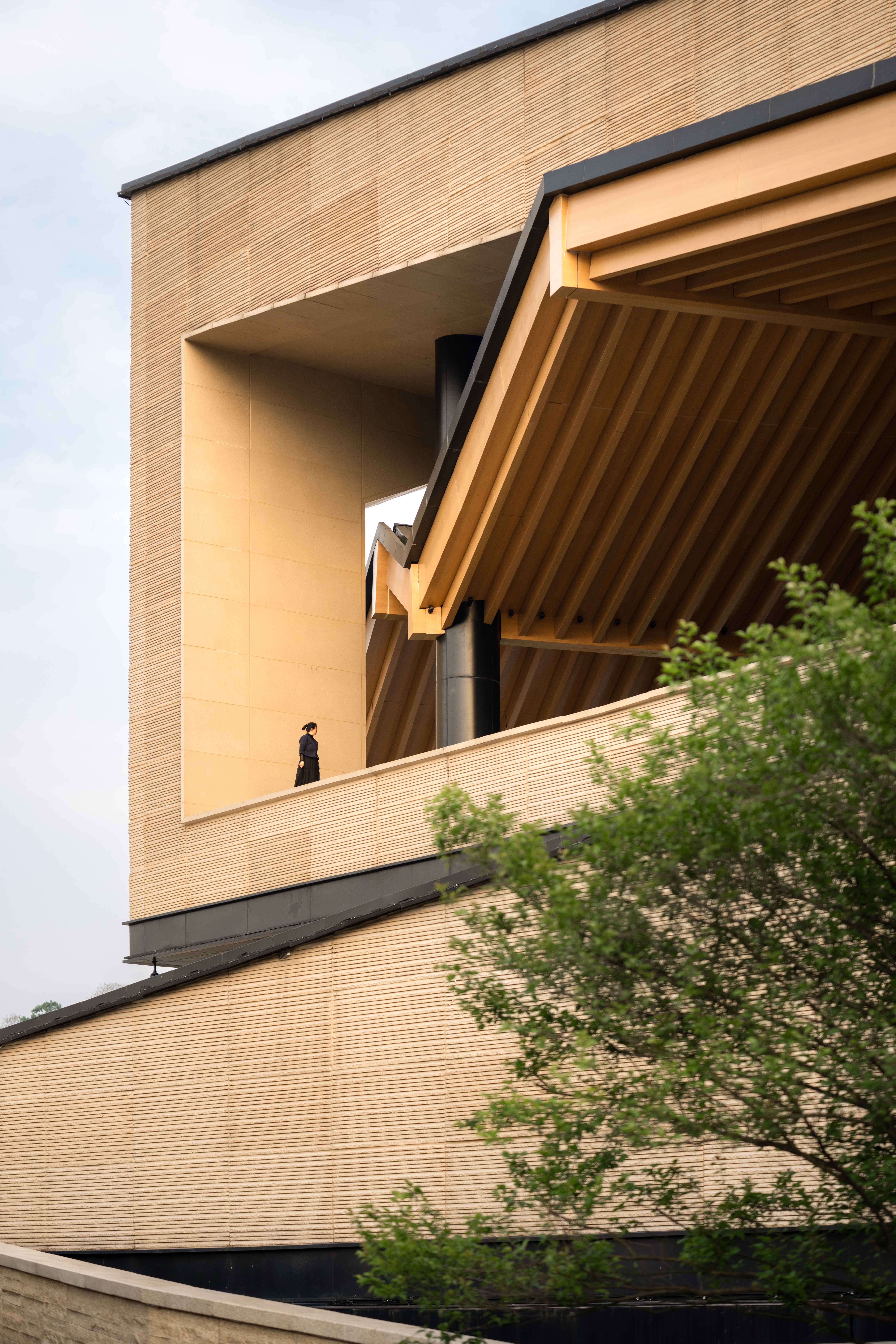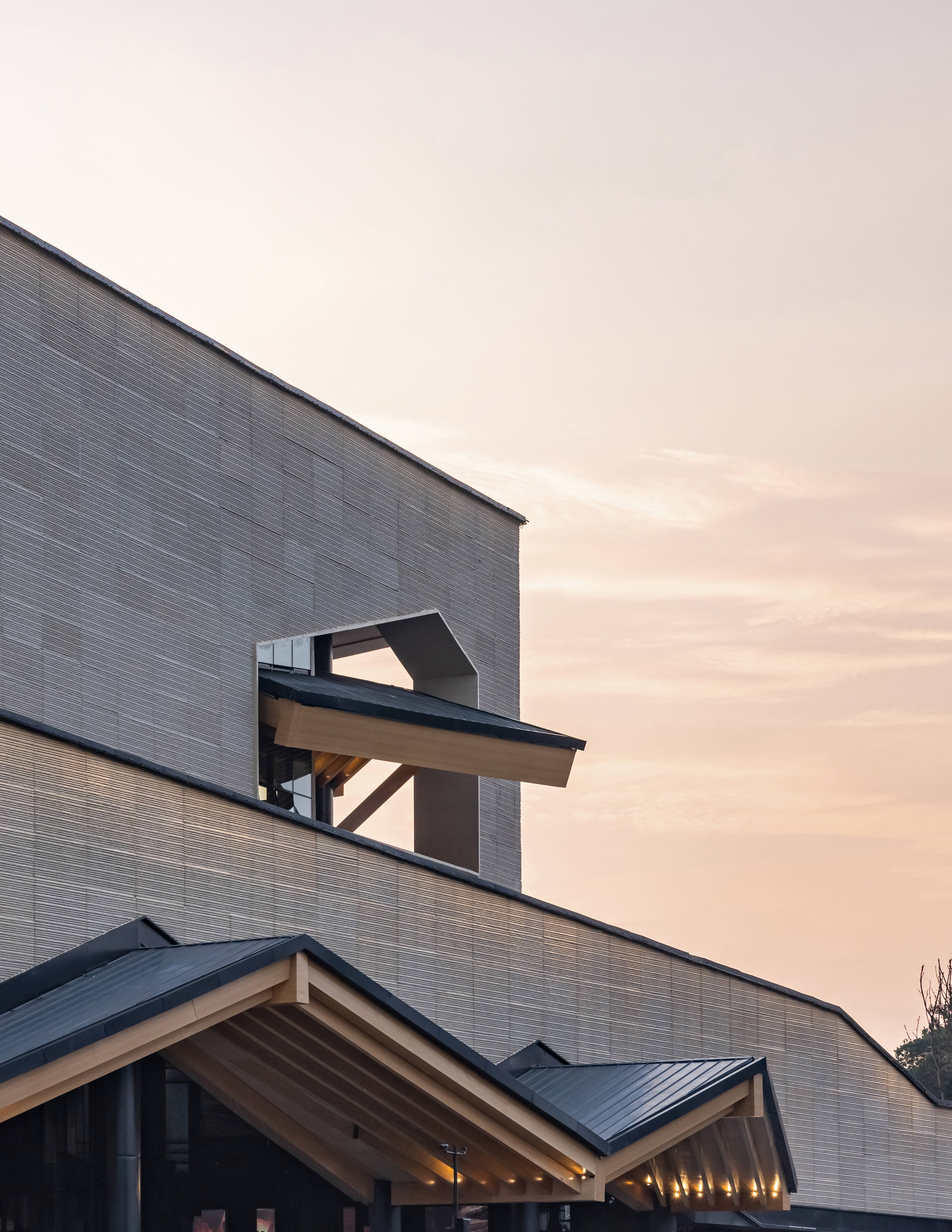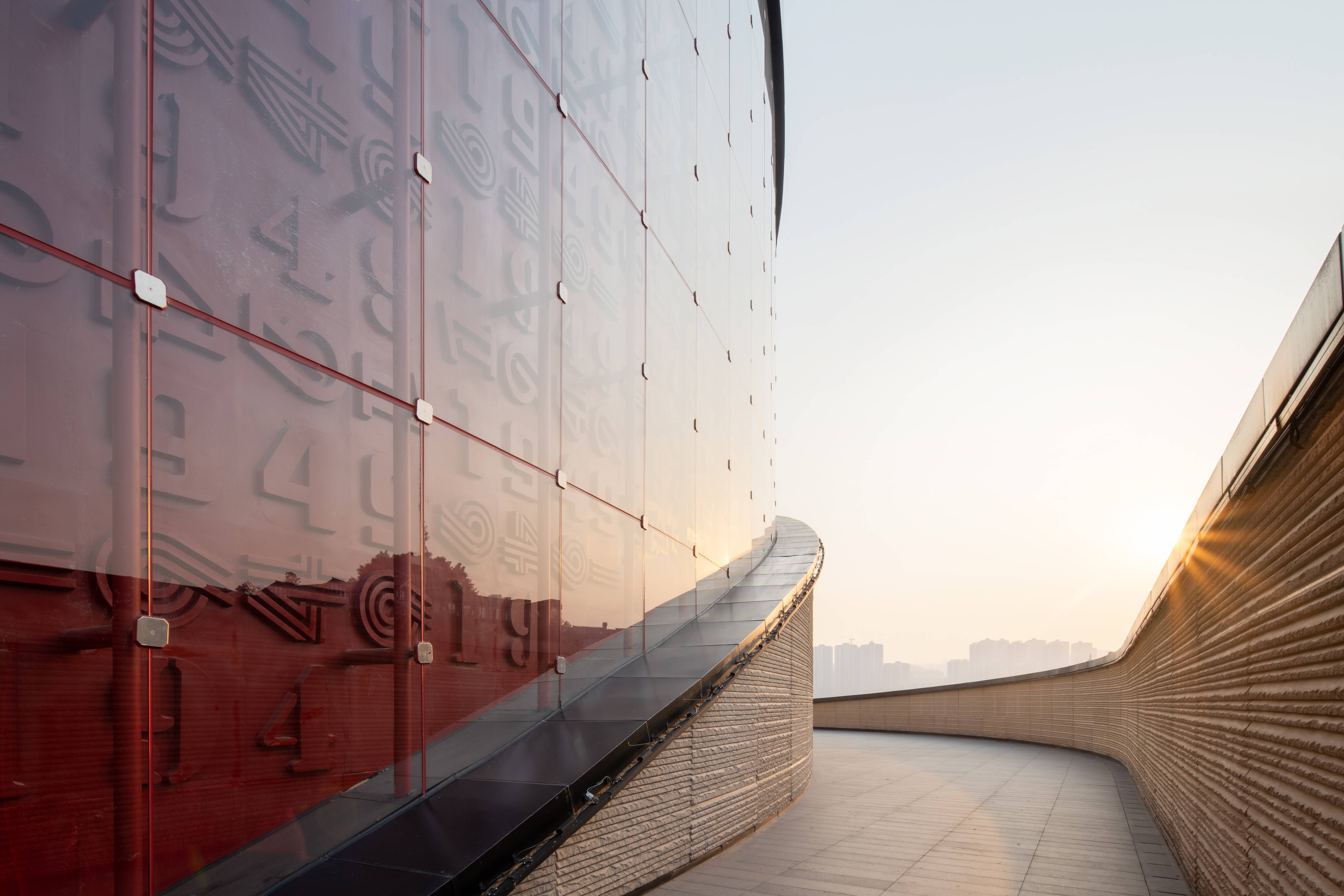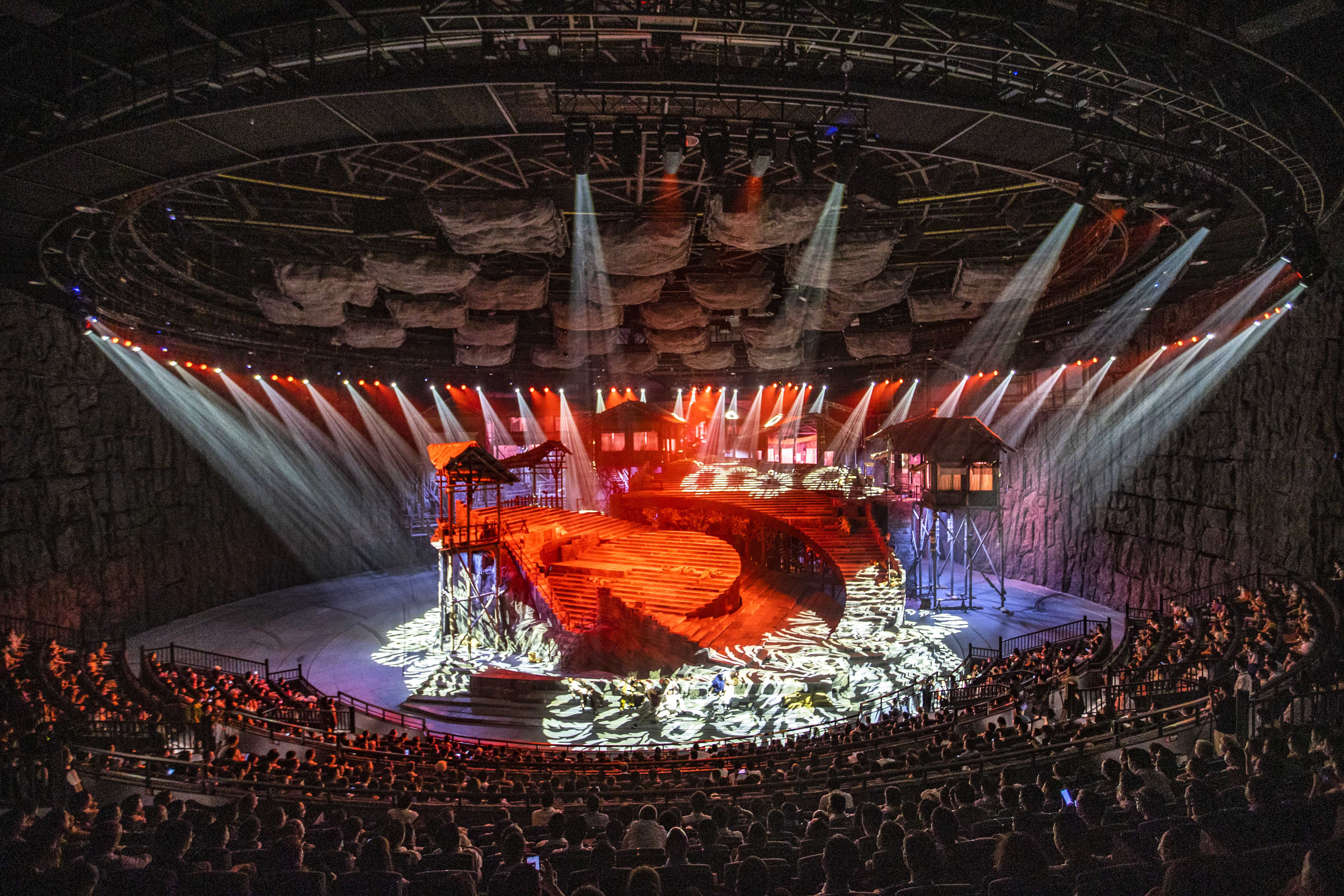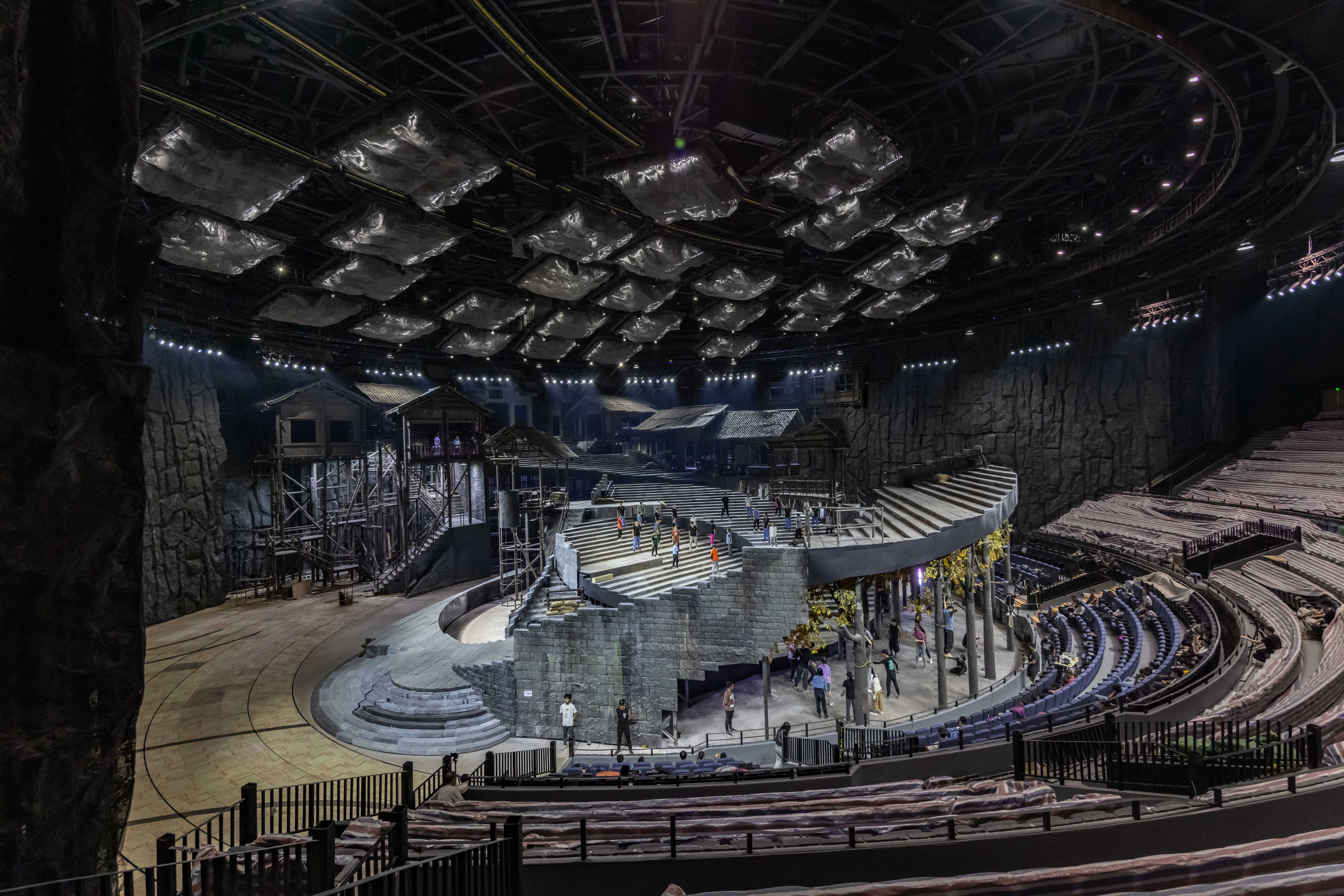SHORT DESCRIPTION
Chongqing 1949 Grand Theatre is located in the Ciqikou area of Shapingba, Chongqing, with a complex surrounding environment: the west is adjacent to the national highway and subway, the north is the cultural and creative area of the Special Steel Factory, and the east is adjacent to the Phoenix Creek and across the water from the historic and cultural district of Ciqikou. The environment includes Gele Mountain, Jialing River, and the ancient town of Ciqikou, which are the original scenes of the story in the plot. How to integrate such a huge volume into the complex surrounding environment? How can the narrative space inside and outside the theater be used to complete the performance experience? When thinking about the relationship between the project and the environment, the designer seized two aspects: first, dissolution and communion; second, control and sorting. The design needs to weaken the huge volume of the building through spatial means, so that the building can be better integrated with the complex environmental elements around it in terms of space, function and flow; at the same time, it also makes full use of the special characteristics and influence of the theme theater in space and form to control and sort out and external environmental elements, forming mutual constraints and integration of individuals and groups, truly realizing the dissolution of site boundaries, mutual adaptation of scene behavior and the spirit of place common.

